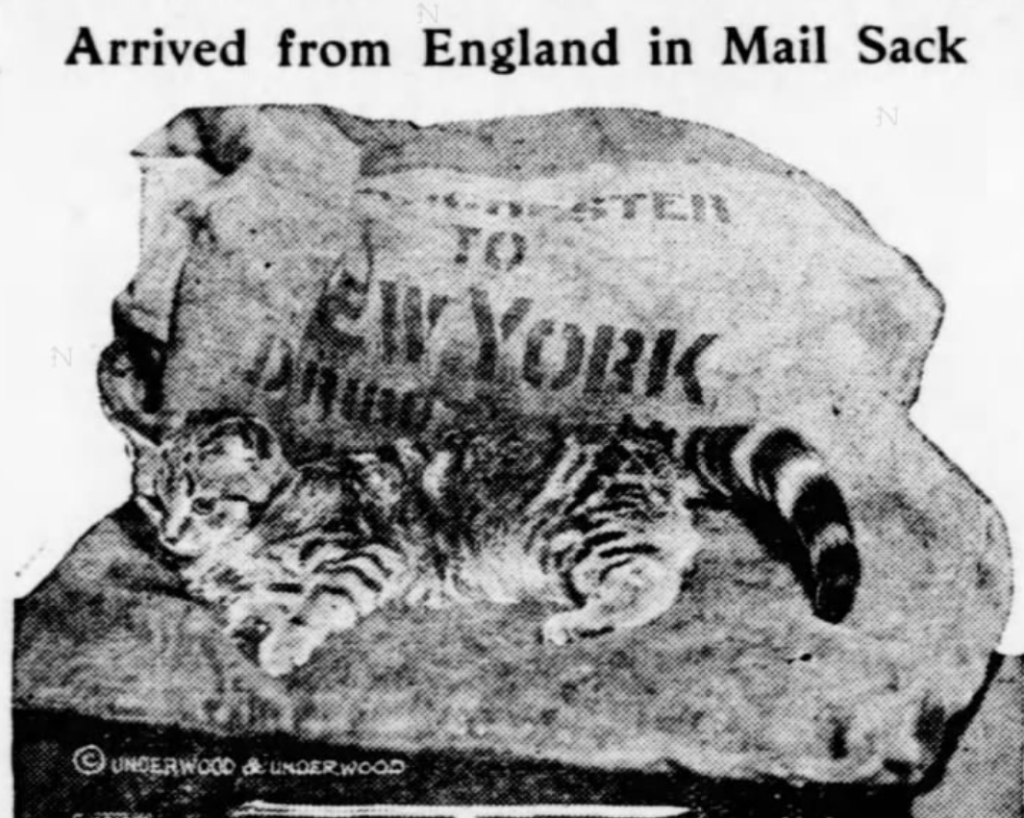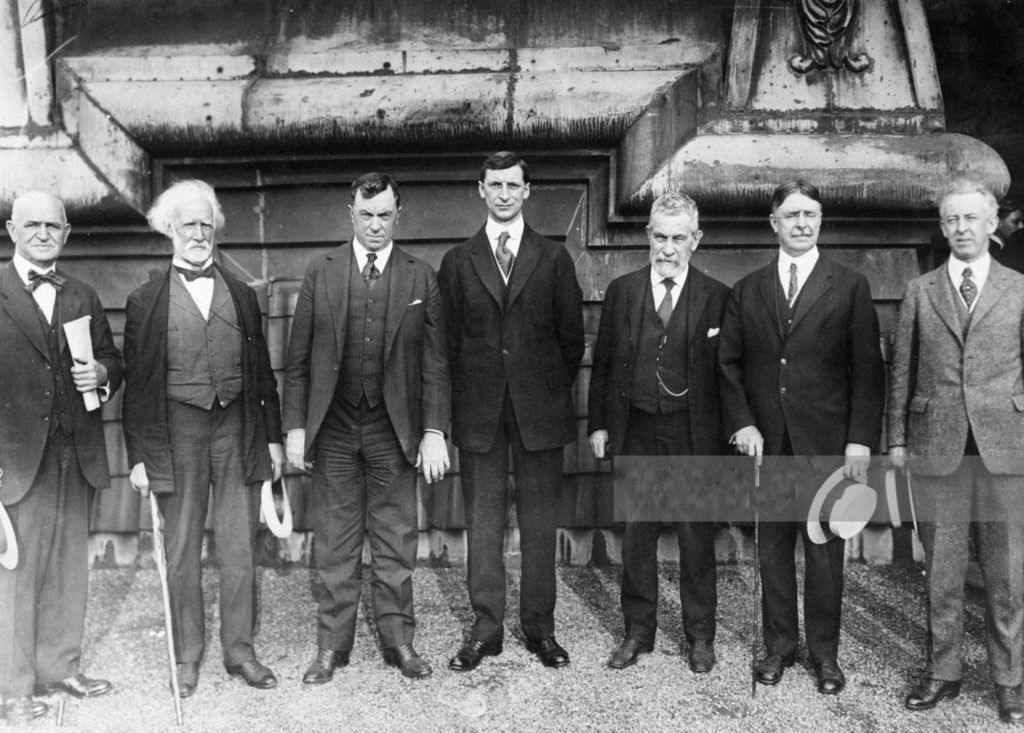Can curiosity really kill a cat that easily if a cat has nine lives? What if curiosity almost kills a cat; how many lives does the cat still have left? The following tale about a cat that sailed from England to New York on the RMS Aquitania shows that curiosity doesn’t always kill; and perhaps, some cats have more than nine lives.

On Saturday, December 11, 1920, employees at the New York General Post Office got a big surprise while opening some mail delivered to the United States from England via the steamship RMS Aquitania. Inside one sealed mail sack was a small male kitten.
According to the press, the gray tabby kitten must have been curious and found his way into the mail sack in Manchester, England, on December 3. The bag was placed in the ship’s mail hold with 6,100 other mail sacks and forgotten for eight days.
Every day that the kitten was in the mail sack without food and water, he lost one cat life.
When the Aquitania arrived in New York that Saturday morning, all of the mail bags were loaded onto the pier. A workman noticed a slight movement in the bag and began yelling. “Help! Murder! A bomb!” All the men on the pier ran for their lives in complete panic.
After the frightened men calmed down, one of the workers approached the mail sack and loaded it onto a truck. The package was rushed to New York’s General Post Office on 8th Avenue at 33rd Street.

After opening the bag, the employees watched in amazement as the kitten jumped out and staggered across the room. He made his way to a radiator, where he stood shivering and chewing on a piece of paper that he had carried from the mail sack.
The kitten was weak and pale and emaciated. Having gone eight days without food and water, the poor little thing was barely alive. There was no address and no stamps on the feline package, so the men surmised he was a stowaway who had somehow gotten into the mail sack.

The employees purchased a bottle of milk and brought him into the fireroom (perhaps the boiler room) to get warm. Soon, the kitten began eating solid foods and putting on weight. The postal employees adopted the kitten, signed him up for a civil service position as a mouser on the feline police squad, and named him Kelly.
It was later discovered that the paper Kelly had been chewing was the fragment of a love letter. The “scientists” among the postal employees believed that the kitten’s life was saved by this letter. Their reasoning: it was a well-known scientific fact that love letters contain more calories than all the beefsteak and milk in the world.
The Éamon De Valera Mystery
Although many newspapers across the country picked up the story of Kelly the cat, the feline’s tale was upstaged by the story of another reported passenger on the ship’s return trip to England.
When the RMS Aquitania left New York on December 12, reports immediately began circulating that Éamon De Valera, president of the Sinn Fein Irish Republic, was among the passengers on the ship. It was surmised that De Valera was a stowaway, possibly working as a fireman or stoker or otherwise disguised.

Cunard officials quickly denied the rumors that De Valera was a passenger, but they admitted he could have been a stowaway on the ocean liner.
Those in the Irish circles believed that if he was on the ship, he would not disembark in England, where he would be immediately arrested. He would instead get off on French soil, so to speak.
So, police in Cherbourg were extra vigilant in checking the passports of all 700 passengers getting off at that port.
Harry Boland, secretary to De Valera, said rumors that the political leader was on the ship were “a joke,” and that he was still in New York and preparing to continue his speaking tour in the United States.
Boland’s statement was apparently also a joke. A week after Christmas, on December 31, Boland announced that De Valera had arrived safely back in Ireland.
Boland said it would be treason for him to disclose how his boss left the country and made it to Ireland, but he intimated that he sailed from a United States port. “Just say he went over on the Irish presidential yacht,” Boland told the press.
As one newspaper noted, “The public may never know how De Valera managed to reach Ireland.” Maybe somebody should have checked all the mail sacks on the Aquitania on its return trip to England…





so glad the little one survived. also liked the de Valera info
I love this story- foremost that it had a happy ending for little Kelly- and also the Seinn Fein angle & de Valera! Funny how touching anipal stories get twined up with history! Look forward to seeing more! Thank you for this one!